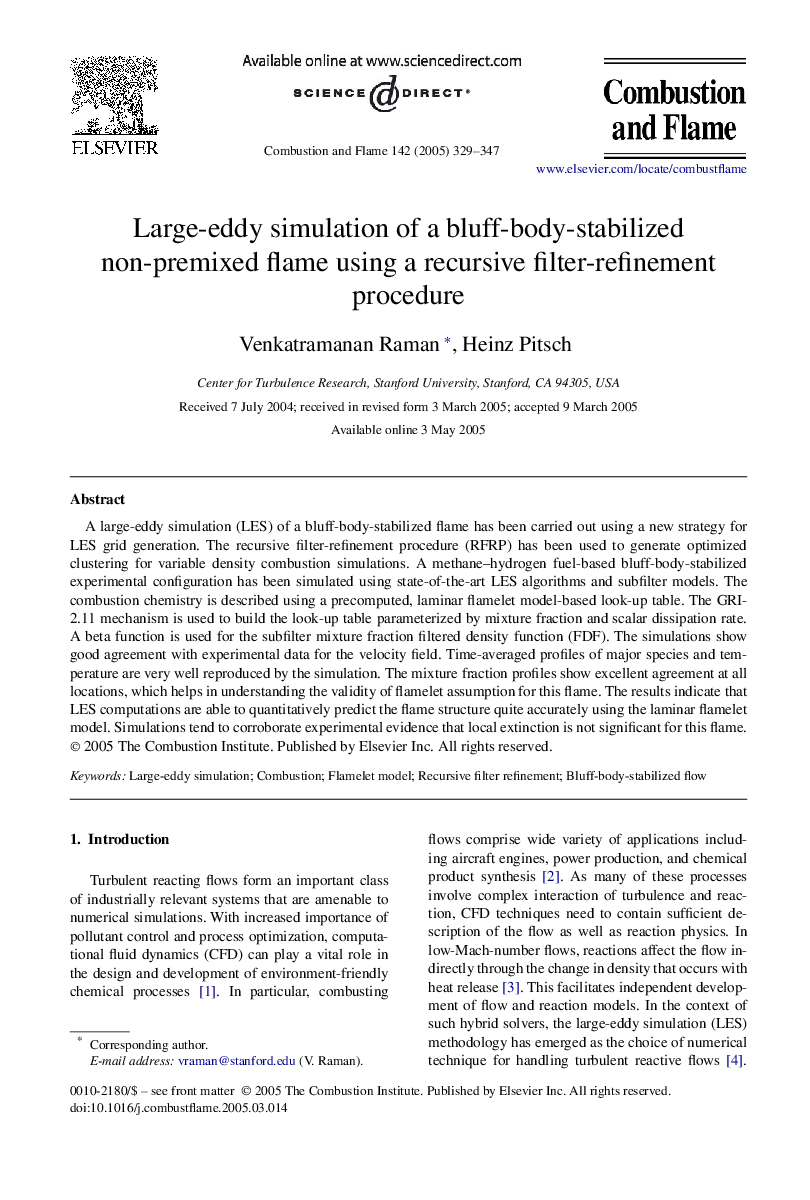| Article ID | Journal | Published Year | Pages | File Type |
|---|---|---|---|---|
| 10264425 | Combustion and Flame | 2005 | 19 Pages |
Abstract
A large-eddy simulation (LES) of a bluff-body-stabilized flame has been carried out using a new strategy for LES grid generation. The recursive filter-refinement procedure (RFRP) has been used to generate optimized clustering for variable density combustion simulations. A methane-hydrogen fuel-based bluff-body-stabilized experimental configuration has been simulated using state-of-the-art LES algorithms and subfilter models. The combustion chemistry is described using a precomputed, laminar flamelet model-based look-up table. The GRI-2.11 mechanism is used to build the look-up table parameterized by mixture fraction and scalar dissipation rate. A beta function is used for the subfilter mixture fraction filtered density function (FDF). The simulations show good agreement with experimental data for the velocity field. Time-averaged profiles of major species and temperature are very well reproduced by the simulation. The mixture fraction profiles show excellent agreement at all locations, which helps in understanding the validity of flamelet assumption for this flame. The results indicate that LES computations are able to quantitatively predict the flame structure quite accurately using the laminar flamelet model. Simulations tend to corroborate experimental evidence that local extinction is not significant for this flame.
Related Topics
Physical Sciences and Engineering
Chemical Engineering
Chemical Engineering (General)
Authors
Venkatramanan Raman, Heinz Pitsch,
